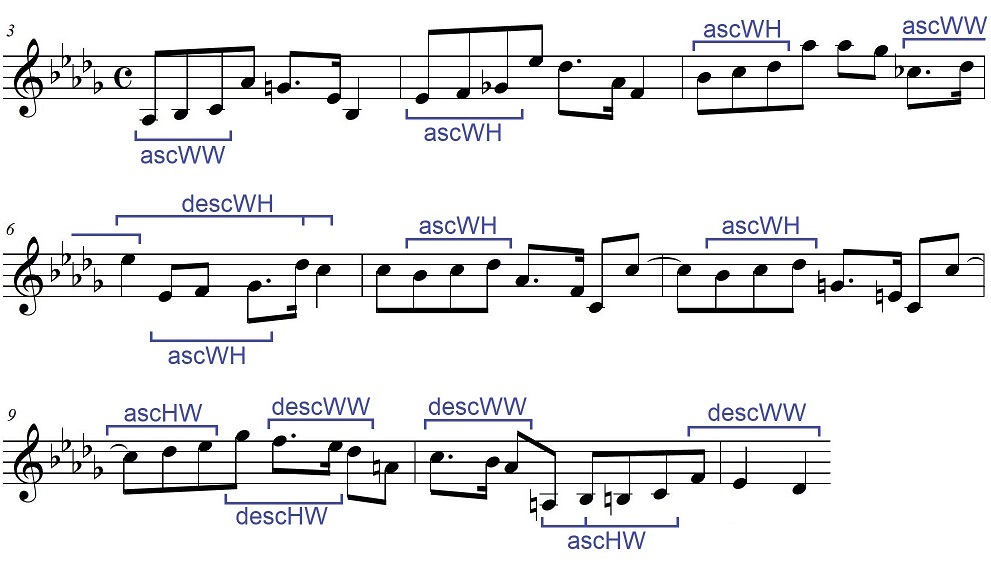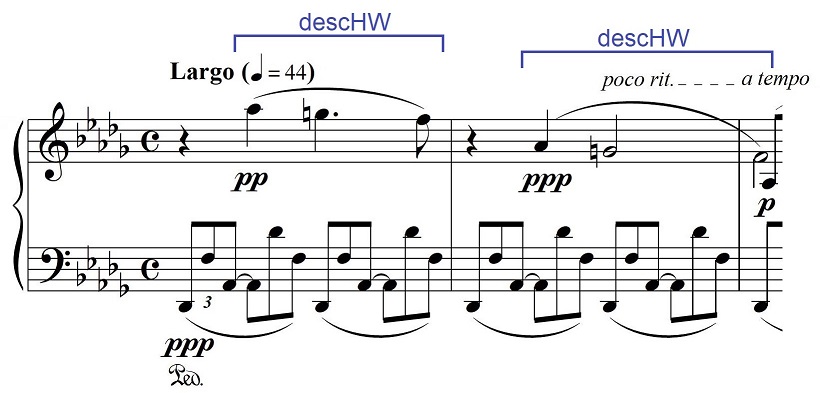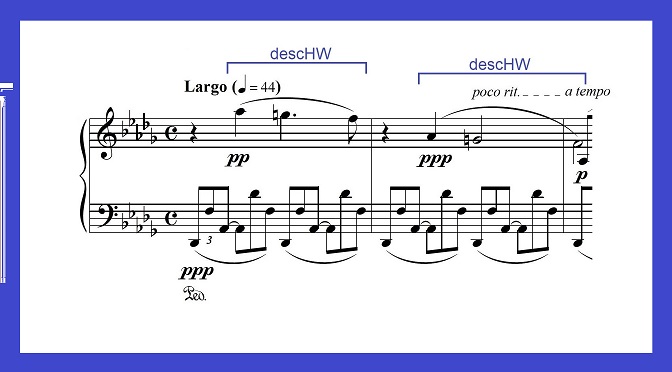Compositional Process: The Melody of Life (Part 2)
In Part 1 of this series, I began to describe the process by which I composed my Nocturne No. 2 for Piano. That process started with the creation of the principal melody. At that stage in the piece’s development, I was not thinking much about theory, but rather was guided mostly by my musical intuition as I tried to translate a particular emotion into melody. In retrospect, however, the melody made sense from a theorist’s analytical perspective. As I noted in the previous post, a key characteristic that gives the melody coherence is a symmetrical relationship between its beginning and end: It begins with a sequence of three notes, ascending by whole steps from scale degree 5 in D-flat major, and concludes with a mirroring sequence of three tones, descending by whole steps to scale degree 1.

As soon as I noticed that remarkable symmetry, I began examining other three-note linear sequences within the melody. We can call them “3-lines” for short. The melody first appears in measures 3-11.

As can be seen, the 3-lines are in fact the main building blocks of the melody. I have identified them here according to their direction and whole-step/half-step pattern. For example, in measure 3 the initial ascent by whole steps is marked “ascWW,” and the ascent in the next measure by a whole step followed by a half step is marked “ascWH.” The initial ascWW is mirrored by the descWW at the end of the melody. The latter also concludes a sequence of three consecutive descWW descents in mm. 9-11.
As I became consciously aware of these 3-lines, they strongly influenced the rest of the process of composing this nocturne, and their pervasiveness is evident from viewing the score video.
Within mm. 3-11, 3-lines permeate not only the main melody, but the inner voices as well. They also appear in the piece’s introductory two measures, in its middle section, and in its coda. In the first two measures (below), the 3-lines include pitch class G♮, which in this D-flat major context suggests Lydian mode, while also preparing the ear for the G♮ in the first bar of the melody.

The repeated descHW pattern in these two measures will become the basic building block for the secondary melody that appears in the B section of the piece’s ABA form. Curiously, that secondary melody also has modal implications, but pointing to Dorian rather than Lydian. Part 3 of this series will take a closer look at that melody and at the rest of the middle section.

